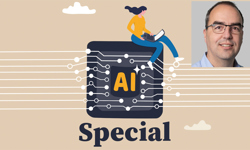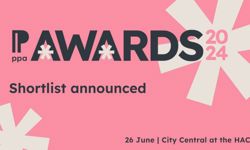Q. For a single title publisher, is a fully specked DAM system overkill?
A. No, absolutely not. Even when you have just a few people using the DAM system, you will make them more efficient – a rule of thumb says that 3 to 10 working hours per employee per month are wasted on searching for files. A DAM system helps publishers of any size save resources; for example to serve additional channels, including social media. Preventing double purchases and fines related to incorrect asset usage will also create additional savings. The good thing is: regardless of the size of the installation, most DAM systems offer the same functionality to all customers – even smaller publishers can exploit the full set of DAM benefits.
Q. In your experience, for publishers that have invested in a proper DAM system, which aspects or functionality are typically most under-utilised?
A. You might expect the answer to this question to lie somewhere within the creative workflow, and this may partly be true. In our opinion however, the integration of digital asset management solutions with other business applications, including CMS, CRM, PIM and more – based on versatile APIs – represents the area of greatest potential for a DAM. Integrating your DAM system with other applications offers enormous potential in terms of the return-on-investment and efficiency gain.
Q. What are the most common mistakes publishers make with their DAM systems?
A. There is one very significant failing. Many publishers do not take the time to analyse their existing workflow and to review their business goals for the years ahead and how this impacts their current workflow. The results of the analysis are essential for the development of a sustainable DAM strategy and will enable the publisher to select the most suitable DAM solution. They need to be able to scale and expand the system over time – more users internally and externally, integrations with other systems, more storage, and more.
Q. To get started with a syndication programme, what steps does a publisher need to take?
A. It is important to tailor the metadata strategy to this project – it should include, for example, information on licences and usage restrictions. Tracking and management of the licenses should also be done by the DAM system. The DAM should be integrated with the website as well as an accounting system – again, a powerful API is necessary.
Q. What’s the optimum time of day for user content consumption on smartphones & tablets?
A. There are many studies regarding that question. A detailed description is beyond the scope here. As a rule of thumb – tablets are mainly used at home in the morning and in the evening, smartphones while commuting and during lunchtime in the office, and the PC at work.
Q. These touch points during the day – the diagram focuses on devices, not on platforms. Why is that?
A. You’re right – usage of platforms also depends on the time of day. This has become a real science – which platform readers prefer at what time of the day, and when you’ll get best results. Good sources are Moz, Kissmetrics and more.
Q. Is using DAM in the cloud secure?
A. That depends on the provider you select – the key partners including Amazon Web Services and Microsoft Azure without any doubt offer a very high degree of safety. When we talk to customers, security of cloud-based solutions is always a big issue. Companies really concerned with the security of their data – either because of legal or company regulations – should opt for a system they can install on their premises. The best option is a vendor offering both approaches, enabling the publisher to switch if necessary.
Q. What sort of efficiencies could we expect to see by implementing a fully integrated DAM system?
A. Even by itself, a DAM system lets its users exploit an enormous efficiency potential – but the seamless and transparent integration with business applications (including CMS, CRM or PIM) and creative applications (like Adobe Creative Cloud) is the real turbocharger in terms of efficiency and effectiveness. The powerful features of the DAM system are available directly from within the respective applications – Digital Asset Management is no longer a separate application but merges into Content Management, Customer Relationship Management, PIM and creative processes.
Q. You mentioned a metadata-driven workflow. How does that work?
A. When you have analysed your workflow, you’ll see the stages where files are handed-over and what state they are in. Based on that information, you can define the required individual metadata fields – most of the DAM solutions provide features to do so. When the user sets, for instance, the metadata of an image to »Needs editing« from a pull-down menu, the file can be automatically routed to the image editor.
Q. Why should multi-channel publishing lead to an increase of file stocks?
A. There are two main reasons. Firstly, the more channels you use, the more images, videos and audio you need – think about interactive publications for tablets, but also Facebook, Twitter and more. Secondly, any device or channel requires specific formats to display images best; therefore the same file is needed in different formats when you use it in print, online, digital and mobile.
WoodWing Software develops and markets a premier, cost-efficient multi-channel publishing system, Enterprise, and an innovative digital asset management system, Elvis DAM. WoodWing’s solutions are aimed at magazine and newspaper publishers, corporate publishers, agencies and marketing departments, helping them to reach their goals for quality, economy and time-to-market.
WoodWing Software, founded in 2000, has its headquarters in Zaandam, The Netherlands, and has regional sales offices in Europe, the Americas and Asia Pacific. Customers are served locally by over 80 selected partners in more than 100 countries – in the UK by Evolved Media Solutions and Media Systems Ltd.
WoodWing’s long-standing relationship with Adobe as a Technology Partner and its close cooperation with a large number of other technology vendors worldwide, confirm WoodWing’s position as one of the leading suppliers of publishing software. WoodWing is a privately owned company, with all founders actively engaged.
You can view a recording of John’s webinar here.










